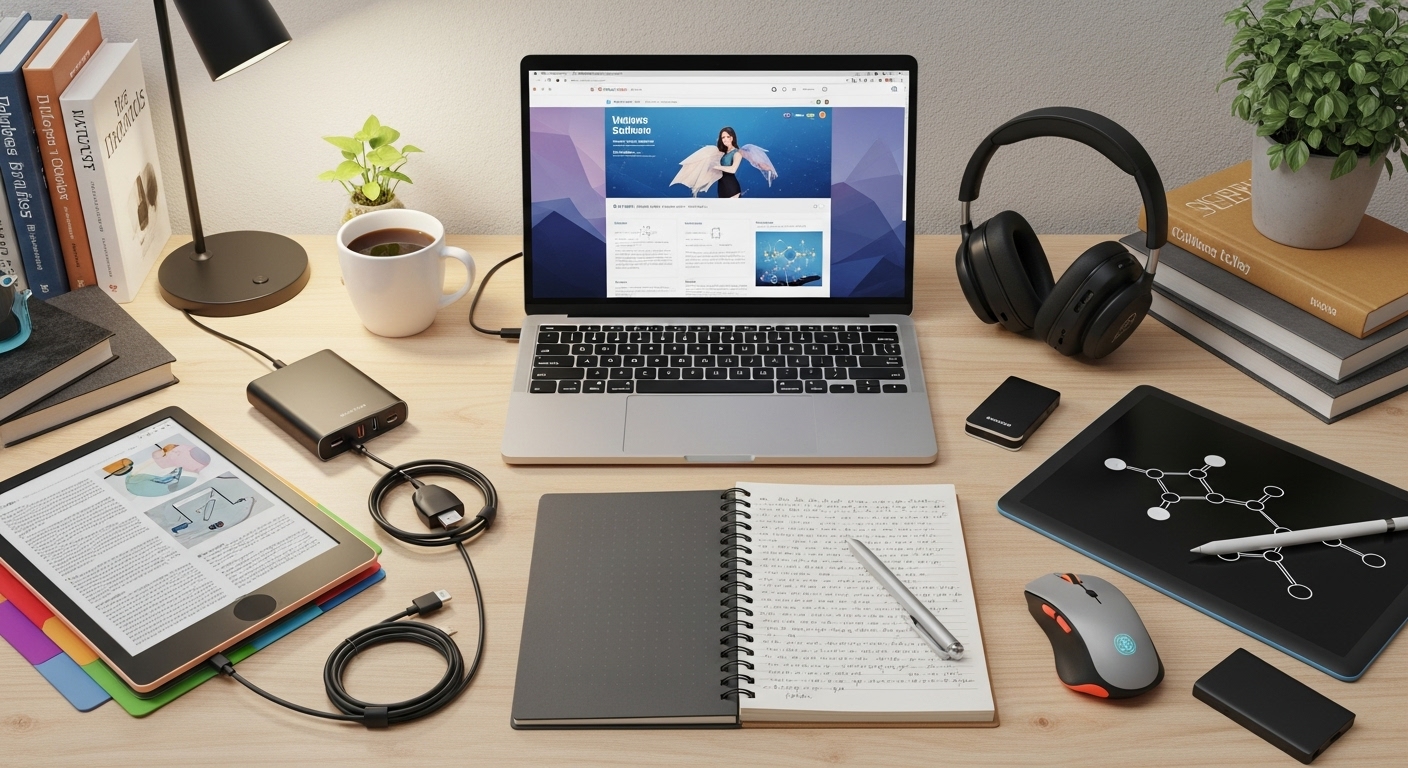Introduction
Home security has always been a top priority for families and individuals alike. With the rise of technology, protecting your home has evolved far beyond simple locks and keys. Today, a wide range of home security tech devices not only safeguard property but also provide peace of mind through real-time monitoring, smart alerts, and integration with other smart home systems.
The best home security devices blend advanced technology with ease of use, giving homeowners total control over their safety. From smart cameras and motion sensors to AI-powered doorbells and smart locks, modern devices ensure that every corner of your home is covered. In this blog, we will explore the best home security tech devices available today, their features, and how they are transforming the way we protect our homes.
The Evolution of Home Security Technology
Traditional home security relied on alarms connected to landlines or basic surveillance cameras. While effective in their time, these systems lacked flexibility and adaptability. With the rise of wireless internet, smartphones, and artificial intelligence, home security technology has undergone a massive transformation.
Today, homeowners can monitor their houses remotely, receive instant alerts, and even speak to visitors without being physically present. Devices are no longer bulky or complicated; they are sleek, connected, and highly user-friendly. This evolution has democratized home security, making advanced protection accessible to both urban apartments and suburban homes.
Why Invest in Modern Home Security Tech Devices
Modern security devices do more than just protect against intrusions. They enhance the overall lifestyle of homeowners by combining convenience with safety. The reasons to invest include:
- 24/7 Monitoring: Many devices allow homeowners to monitor their properties anytime and anywhere.
- Deterrence: Visible cameras and smart doorbells discourage potential burglars.
- Integration: Devices connect with other smart systems such as lighting, thermostats, and voice assistants.
- Peace of Mind: Parents, travelers, and elderly homeowners benefit from knowing their homes are secure.
- Emergency Response: Some devices automatically alert authorities in case of unusual activity.
With these advantages, it becomes clear why home security tech has become an essential investment.
Best Smart Security Cameras
Smart security cameras are among the most essential home security devices. They provide high-definition video, real-time alerts, and features like night vision and motion detection.
Indoor Cameras
Indoor cameras help homeowners monitor activity inside the house. Whether checking on children, pets, or elderly family members, these cameras provide an added sense of safety. Features like two-way communication allow homeowners to interact directly through their cameras.
Outdoor Cameras
Outdoor cameras are designed to withstand weather conditions while capturing activity outside the home. They often include wide-angle lenses, motion detection, and spotlights to deter intruders.
AI-Powered Features
The latest cameras use artificial intelligence to distinguish between humans, animals, and vehicles, reducing false alarms. Some even integrate with facial recognition to identify familiar individuals.
Smart Video Doorbells
Video doorbells have revolutionized how homeowners interact with visitors. With built-in cameras, microphones, and speakers, they allow homeowners to see, hear, and speak to anyone at their door, whether they are at home or away.
Key Features of Smart Doorbells
- HD Video: Ensures clear visuals of visitors.
- Motion Detection: Alerts homeowners of movement near the door.
- Two-Way Communication: Provides the ability to converse with guests or delivery personnel.
- Night Vision: Ensures security around the clock.
These devices add an extra layer of protection by capturing footage of all visitors, whether or not they ring the doorbell.
Smart Locks
Smart locks are redefining how we secure entry points. Gone are the days of fumbling for keys. Instead, homeowners can use smartphones, keypads, or even biometric identification to unlock doors.
Benefits of Smart Locks
- Keyless Entry: Eliminates the need for physical keys.
- Remote Access: Allows homeowners to lock or unlock doors from anywhere.
- Guest Access: Temporary codes can be shared with friends, family, or service providers.
- Integration: Works with smart assistants like Alexa or Google Assistant for voice control.
Smart locks provide both convenience and enhanced security, especially for households with multiple members.
Motion Sensors and Detectors
Motion sensors play a critical role in alerting homeowners to unusual activity. They are typically placed at entryways, hallways, or open spaces to detect movement.
Types of Motion Sensors
- Infrared Sensors: Detect body heat.
- Ultrasonic Sensors: Use sound waves to detect movement.
- Dual-Technology Sensors: Combine infrared and ultrasonic for accuracy.
These sensors can be connected to alarms, lights, and cameras, creating a layered security system that responds immediately to intrusions.
Smart Alarms and Sirens
Alarms remain one of the most effective deterrents against break-ins. Modern smart alarms connect with smartphones and smart hubs, notifying homeowners instantly of a breach.
Features of Smart Alarms
- Customizable Alerts: Different tones for doors, windows, or motion detection.
- Remote Control: Ability to arm or disarm alarms remotely.
- Integration with Devices: Connects with cameras and locks for a complete system.
Loud sirens also scare intruders and notify neighbors of a potential break-in.
Glass Break Sensors
Burglars often attempt to enter through windows, which is why glass break sensors are an important part of home security. These devices detect the unique sound frequency of breaking glass and immediately alert homeowners.
By placing them near large windows, glass doors, or sliding doors, homeowners can add a protective layer against this common intrusion method.
Smart Lighting Systems
Lighting plays a major role in home security. Dark homes are often targeted by burglars. Smart lighting systems use timers, motion sensors, and remote control features to simulate occupancy even when no one is home.
Features of Smart Lighting
- Motion-Activated Lights: Turn on when movement is detected.
- Remote Control: Operate lights from anywhere using smartphones.
- Scheduling: Pre-programmed schedules make it appear as though someone is home.
When paired with cameras and alarms, smart lighting significantly boosts home security.
Home Security Hubs and Control Panels
Smart hubs serve as the central brain of a home security system. They connect multiple devices—locks, sensors, cameras, and alarms—into one cohesive system that can be controlled via smartphone apps or voice assistants.
A good hub allows customization of security settings, seamless automation, and efficient monitoring. For example, a homeowner can program their hub to lock doors, turn on lights, and arm alarms simultaneously at bedtime.
Biometric Security Devices
Biometric devices are among the most advanced forms of home security. They rely on unique identifiers such as fingerprints, facial recognition, or retinal scans to grant access.
Advantages of Biometric Devices
- High Security: Harder to bypass compared to traditional locks.
- Convenience: No need for keys or codes.
- Integration: Many integrate with smart locks and hubs for added convenience.
Though more expensive, biometric systems provide state-of-the-art protection for high-security needs.
Environmental Safety Devices
Home security is not just about preventing crime—it also involves protecting against environmental hazards. Devices such as smoke detectors, carbon monoxide detectors, and water leak sensors are vital.
Importance of Environmental Devices
- Smoke and Fire Detection: Alerts homeowners of fires early.
- Carbon Monoxide Monitoring: Protects against an invisible but deadly gas.
- Water Leak Detection: Prevents costly damage from burst pipes or leaks.
These devices often integrate with security systems, ensuring comprehensive protection for both property and lives.
Integration with Smart Assistants
The rise of smart assistants like Amazon Alexa, Google Assistant, and Apple HomeKit has made controlling home security devices more intuitive. Voice commands allow homeowners to arm systems, check cameras, or lock doors without lifting a finger.
This integration adds convenience while making home security more user-friendly and accessible.
Wearable Tech and Home Security
Wearable devices such as smartwatches can also integrate with home security systems. Homeowners can receive instant alerts on their wrists, lock or unlock doors, and check camera feeds without reaching for their phones.
This makes monitoring seamless, particularly for those who are always on the go.
Future of Home Security Tech Devices
Home security technology is advancing rapidly. Future devices may rely heavily on artificial intelligence, machine learning, and predictive analytics. Potential developments include:
- Predictive Security: AI systems that predict potential threats before they occur.
- Drone Surveillance: Personal drones for large property monitoring.
- Deeper Integration: Unified systems combining all aspects of home safety and automation.
- Energy-Efficient Devices: Eco-friendly security solutions powered by renewable energy.
The future promises smarter, faster, and more proactive security systems that go beyond just protection.
Choosing the Right Security Devices for Your Home
With so many options available, choosing the right devices depends on individual needs. Factors to consider include:
- Size of Home: Larger homes may need more cameras and sensors.
- Budget: Some devices are affordable, while others are premium investments.
- Lifestyle: Frequent travelers may prefer devices with robust remote monitoring.
- Integration: Devices that work well with existing smart systems are preferable.
By evaluating these factors, homeowners can create a tailored security setup that balances cost, convenience, and safety.
Conclusion
Home security tech devices have transformed the way we protect our homes. From smart cameras and video doorbells to biometric locks and environmental sensors, modern solutions offer both convenience and protection. These devices are not just about deterring criminals—they are about creating peace of mind, improving daily life, and integrating seamlessly into smart home ecosystems.
For innovators, homeowners, and families alike, the best home security tech devices represent a blend of safety, intelligence, and forward-thinking design. Investing in them is not just about security—it is about embracing a lifestyle of confidence and control in the digital age.

